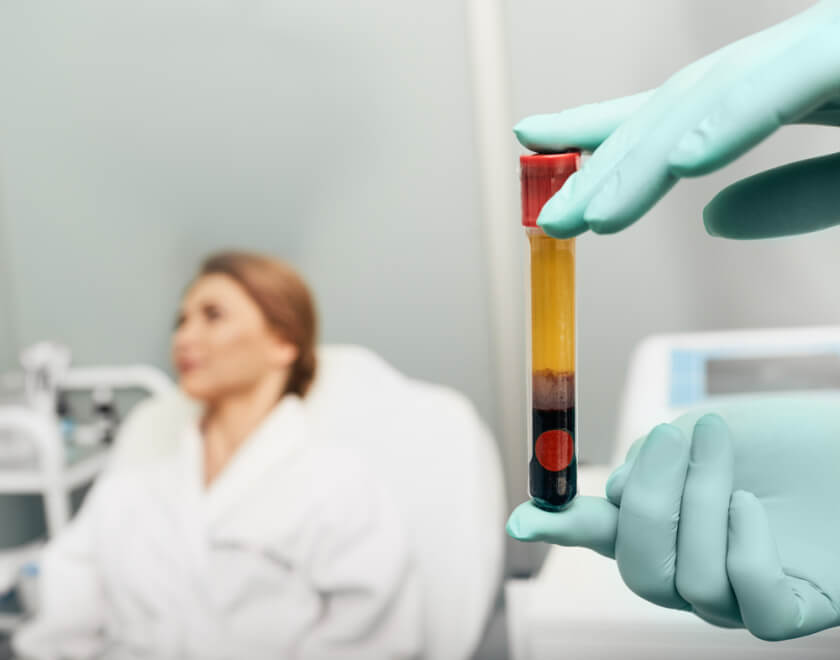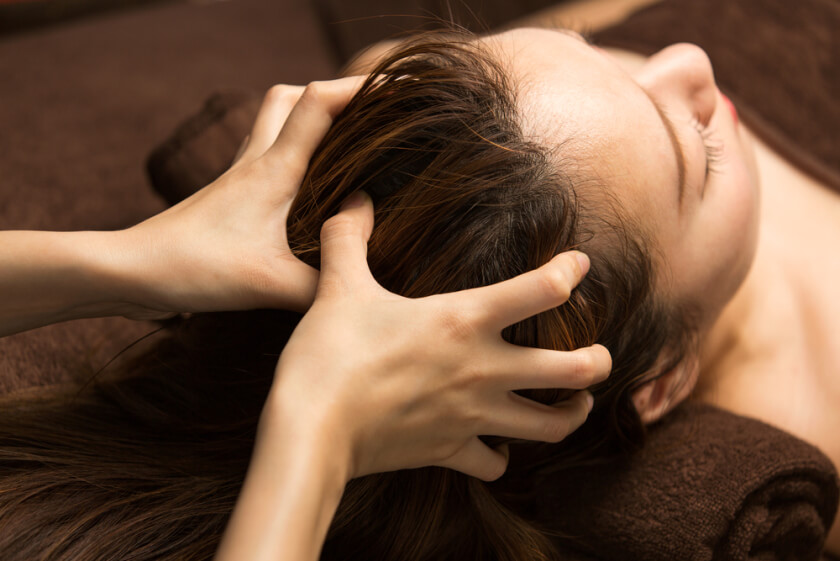If you’re seeing patches of finer and lightly pigmented hair growing along the hairline, you have what is commonly known as baby hairs. The appearance of these short strands is usually a cosmetic issue but they can also sometimes be a sign that you have an underlying hair loss problem. If the baby hairs are caused by some form of alopecia, platelet-rich plasma injections may be able to help.
So how can PRP treatment help regrow short hairs around the frontal hairline? PRP injections can improve blood supply and deliver more nutrients to the follicles to reverse the miniaturization and stimulate active hair growth. It can also help maintain your hair health by improving the overall quality of the strands, strengthening the hair shaft, and slowing down the signs of hair loss.
Treating Short Hairs Around The Hairline With PRP Injections
Platelet-rich plasma therapy is a popular non-surgical solution for hair restoration today. It can be used to regrow lost hair in patients with hair loss conditions like androgenic alopecia or male and female pattern baldness. It can also help improve the quality of the hairs along the hairline and address the problem of baby hairs.
As a hair treatment, PRP is known for its natural capability to stimulate cell growth and repair damaged follicles which can help regrow thicker and healthier hair. The injections contain a potent concentration of platelets and numerous growth factors that can stimulate the weakened follicles which causes short hairs to appear on the hairline.
Some of the main components of PRP that aid in the healing process of damaged scalp tissues and follicles are the platelet-derived growth factor, endothelial growth factor, epidermal growth factor, and fibroblast growth factor.
PRP therapy can also support the normal hair growth cycle by assisting in the transition from telogen to anagen phase. Most baby hairs develop because of the shortened growth stage which causes follicles to shrink and stops hair production. PRP can reverse this by encouraging hair follicular cell proliferation and increasing the growth of new anagen hairs.
How PRP Works For People with Baby Hair

Platelet-rich plasma injections are an autologous treatment and it utilizes platelet concentrations derived from a patient’s own blood sample. Unlike hair transplant surgeries, the procedure for PRP is minimally invasive, requires no downtime, and has no major side effects. Here’s what you can expect from a PRP hair treatment:
- First, the provider will perform a quick blood draw by extracting a small amount of blood from the arm.
- The blood sample will then be placed in a centrifuge machine to separate the platelets and plasma from the red and white blood cells. The optimal platelet concentration in a PRP serum is typically 2 to 7 times higher than what is found in normal blood.
- The provider can add exogenous platelet activators such as thrombin, calcium gluconate, or calcium chloride to improve platelet enrichment. This can also help increase the regenerative and healing potential of the growth factors once they are applied to the injection sites.
- Once the PRP serum is ready, the provider will deliver the platelets to the targeted areas with visible thinning or baby hairs.
When Should You See The Results From PRP?
The effects of PRP scalp injection can vary per patient depending on the severity of their hair loss condition. However, since PRP influences the hair growth cycle, it can naturally take some time to see measurable improvements in hair counts.
Several clinical studies suggest that you may notice some changes in hair thickness, texture, and hair density within four to six weeks after the initial treatment. It can also take commitment to get regular PRP sessions to see optimal hair restoration results.
Experts say that one PRP session may not be enough to achieve desired goals and maintain healthy hair regrowth. On average, patients can start their treatment by undergoing three sessions at 4 to 6 week intervals. Afterward, you may need follow-up treatments every 6 months or once a year to maintain your initial results.
Who Are The Ideal Candidates For PRP Injection Therapy for Hair Growth?
Anyone who is bothered with short hair or substantial hair loss can consult with their provider about getting injections of platelet rich plasma. It has been closely studied to have significant positive effects on patients with androgenetic alopecia, alopecia areata, telogen effluvium hair loss, progressive hair loss, and hair shedding. The injections work best if you are in the early stages of hair loss and have dormant follicles.
It’s also important that you’re in good health and don’t have any underlying medical issues. If you have been diagnosed with low platelet counts, bleeding disorders, chronic skin condition, or an autoimmune disease, you may not be a good fit for a PRP injection.
Are Short Hairs A Sign of A Serious Hair Condition?
Almost anyone can experience some form of hair loss in their life and some conditions can cause the appearance of shorter and finer hairs around the natural hairline. Some of the common types of hair loss that can cause short hairs are:
- Androgenic alopecia – Also known as male or female pattern hair loss, this is a common hereditary condition and can be caused by hormones that attack the healthy hair follicles and affect the hair growth cycle. In women, this can result in excessive hair thinning which can leave shorter hairs along the scalp and hairline area.
- Traction alopecia – Excessive use of hair products and chemicals as well as styling the hair in tight ponytails or braids can damage the follicles and cause hair to fall out. This usually affects the strands along the edges of the scalp and can lead to permanent hair loss if you constantly pull on the hair.
How To Know If Baby Hairs Are Caused By Breakage or Existing Hair Loss
Without a proper consultation with a doctor, it can be difficult to determine whether the baby hairs are caused by damage to your scalp or hormonal and genetic hair loss.
To identify the cause of short hairs, it’s necessary to assess the overall texture and quality of strands. A trichoscopy test or hair pull exam may also be performed to assess follicle health and the pattern of hair growth.
| Hair Breakage | Existing Hair Loss |
| Hair strands will appear coarser and more frizzy | There are visible changes on the hairline |
| Normal baby hairs have similar length but if you have broken hair, they may appear uneven and have split ends | The trichoscopy exam reveals weakened follicle health and slow hair growth |
| Its texture can also feel dry and rough | During the hair pull exam, if at least six hairs come out, they can indicate an active hair loss |
| Baby hairs are usually found on the hairline but if you have breakage, you may notice visible damage on the rest of the scalp |
Other Treatments for Growing Thinning Hairs Around the Hairline

Aside from PRP injections, there are other helpful methods that can stimulate healthy growth to improve the density of baby hairs. Some of the other possible treatment options are:
1) Scalp massage
A scalp massage can help dilate the blood vessels to improve the flow of nutrients and oxygen to the follicles. This in turn will nourish the follicles so they can grow thicker and longer hair strands. You can add a hair serum or essential oils to your massage routine to deeply moisturize the scalp and provide protection from elements that can damage the follicle.s.
2) Topical and oral medications
Doctors may also prescribe the use of topical minoxidil or oral finasteride to combat hair loss. These medications can help provide a steady blood flow to the scalp and nurture the follicles to promote healthy hair growth. They can also prolong the growth phase of the hair cycle to help the vellus hair grow longer.
3) Laser treatment
Low-level laser therapy is a minimally invasive procedure for hair loss and it is said to work by stimulating cell activity in the follicles to promote hair growth. It may also have a positive effect on the hair cycle by delivering more nutrients to the scalp to prolong the anagen stage.
Buy PEP Factor and Other Supplies for Hair Restoration at FACE Med Supplies
When managing short hairs, it’s important to avoid using too many chemicals or heat that can permanently damage them. PRP injections can be a better solution that can encourage regrowth to improve the appearance of baby hairs. Another alternative treatment that can help rejuvenate the scalp and enhance the quality of the hair is PEP Factor.
At FACE Med Store, we offer topical PEP Factor products that are enriched with growth factors, proteins, and copper peptides that can revitalize scalp health and promote hair growth. We also offer other affordable medical tools and supplies for hair loss treatment. To learn more about PEP Factor or to inquire about our stocks, contact us today.






